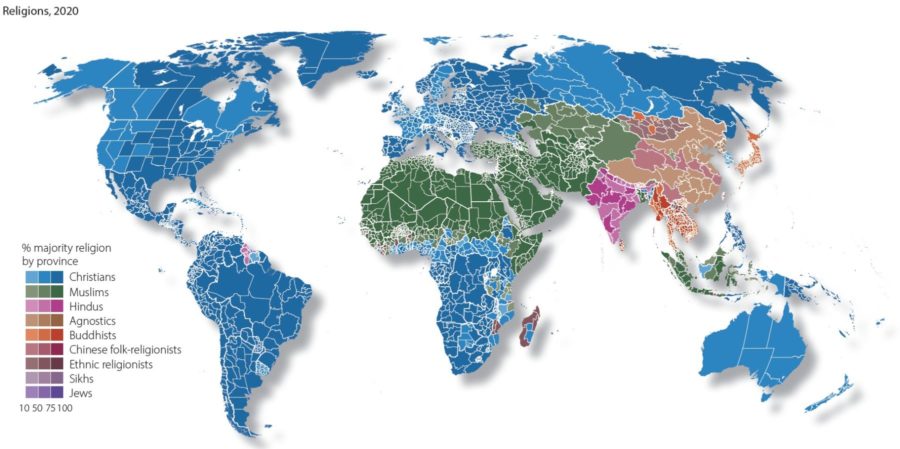Three unexpected trends in religion
DR. TODD M. JOHNSON
PROFESSOR OF GLOBAL CHRISTIANITY AND MISSION
Here’s a short excerpt from the World Christian Encyclopedia, 3rd edition (Edinburgh University Press) on religion around the world. This comes from the 32-page full-color Global Overview which is available for purchase and download here.
The 21st century began with three major unexpected trends in relation to the world’s religions. First, despite the prognostications of leading academics in the mid-20th century, the world is becoming increasingly religious. In 2020, 88.7% of people worldwide profess a religion – up from 80.8% in 1970. The demographic pivot was the collapse of Communism in the late 20th century and the opening of China to the rest of the world. China, the world’s largest country, has experienced a resurgence of religions of all kinds since the end of the Cultural Revolution (1970s). Russia has reclaimed its Orthodox heritage, as have other former Soviet republics in Eastern Europe. Many other countries have experienced a resurgence of religion in the last 20 years, including Albania (formerly the world’s only official atheistic country), Bosnia-Herzegovina and Cuba.
Second, the world is becoming more religiously diverse, especially when measured at the national level. This is especially true in Asia – which has always been the most religiously diverse continent – and beyond, where immigration has transformed previously homogeneous societies into more diverse communities. Han Chinese, for example, are found in the millions throughout Southeast Asia and the world, including Thailand, Indonesia, Malaysia and the United States – bringing their unique East Asian religions with them. Some of the most profound increases in religious diversity are in Germany and the USA. Singapore remains the world’s most diverse country in 2020, home to seven religions over 1% of the country population: agnosticism, Buddhism, Chinese folk-religion, Christianity, Hinduism, Islam and New religions. However, at the same time, some regions are becoming less religiously diverse, such as sub-Saharan Africa, where Christianity and Islam are both growing due to converts from African Traditional Religions.

Third, religious liberty is on the decline worldwide, with grave concerns about religious freedom in the 21st century. The General Assembly of the United Nations adopted and proclaimed the Universal Declaration of Human Rights on 10 December, 1948. Article 18 of the Declaration states ‘Everyone has the right to freedom of thought, conscience and religion; this right includes freedom to change his [sic] religion or belief, and freedom, either alone or in community with others and in public or private, to manifest his [sic] religion or belief in teaching, practice, worship and observance’. The Declaration has been distributed in more than 330 languages and serves as the basis for numerous other international human rights declarations. Despite these efforts, many hundreds of thousands are abused or killed each year because of their religious affiliation, and tens of millions more have been killed, displaced or forced to live as refugees due to religion-related conflicts in the first years of the 21st century alone.
Restrictions against religious groups vary significantly in the world’s 25 most populous countries. Russia, Egypt, Pakistan and Nigeria stand out as the countries with the highest levels of both governmental restrictions on religion and social religious hostilities against certain religious groups. Religious persecution is also gender-specific, with men subject to socioeconomic harassment and women more likely to experience sexual violence.
In light of changes in religious demographics, it is also significant to note that Christians and Muslims together represented 33% of the world’s population in 1800. By 2020 this is about 57% and is expected to surpass 66% sometime after 2050. Consequently, Christian-Muslim relations will increasingly be an important issue in local, national and international contexts.